Especially in a natural environment like the garden, plastic has no place. Unfortunately, however, new plastic plant pots keep accumulating. You can find out how to avoid this here.
If you are aware of the poor environmental compatibility of plastic, you try to avoid disposable plastic in your everyday life. And what about in the garden? In hardware stores and garden centers, the plastic pot is the general standard and it’s difficult to get around it. In addition, most pots are made from the problematic black plastic.
It makes perfect sense to continue using the pots already in your garden inventory. But to help you avoid new plastic plant pots, we’ve rounded up these eight alternatives for you.
Contents
pots and growing containers from natural materials
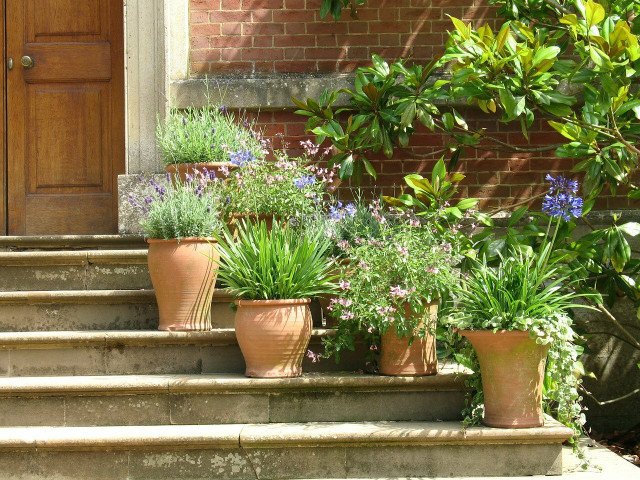
More and more manufacturers now offer biodegradable pots. Here, various natural materials are used, which can be used accordingly according to their properties. We have found the following plastic-free alternatives:
- Hemp: From regionally renewable raw materials, the manufacturer “meinwoody” has created a planter called “Hanfi”, which is very stable and robust and can still be composted. It is available, among other places, at **Avocadostore or directly from the manufacturer.
- Coconut Fibers: Whether you want to use these is up to you. These pots are a waste product of the coconut harvest and thus already far ahead on the sustainability scale. However, it must be considered that long transport routes would have to be accepted and the working conditions during production are often intransparent. In addition, they are rather unstable compared to other alternatives. You can find growing pots made of coconut fiber at **Amazon, for example.
- Wood fibers: Cultivation pots are also available made of pressed wood fibers. They can be planted directly into the soil, retain their hold there and rot in a short time. They are also breathable and water-permeable, so you can prevent waterlogging. You can buy the growing pots from “OwnGrown” for example on **Amazon.
- Natural rubber: Reusable growing plates in various sizes are available from “green&fair”, for example. The natural rubber used comes from Sri Lanka and is fairly traded (you can find for example at **Avocadostore). We found large plant pots at Hornbach. They are made of recycled rubber, are very robust, UV-resistant and frost-resistant (plant pot, 33x30x30 centimeters from Hornbach).
- Cellulose: Larger pots are more likely to be found made of cellulose. The material of these plant pots is equivalent to pressed paper or cardboard. The supplier “Relaxdays” sells pots with a diameter of eleven centimeters. A set of 24, for example, is available on **Amazon.
- Clay: A good alternative are pots made of clay, also known as terracotta. The heavy weight of the vessels gives the plant a stability that prevents it from tipping over. They are very durable and you can even repair them. You can find small clay pots at **Avocadostore, for example, and large varieties of Hentschke ceramics from regional production at **Amazon. Garden centers or home improvement stores in your area may also carry clay planters.
- Ceramics: The collective term ceramics includes several materials, such as earthenware or porcelain. Glazed clay, which is fired at high temperatures, is also included. Pots made of such materials are like clay pots very stable and robust, but have a smoother surface (Kermami pots in different sizes available for example at **Avocadostore).
- Zinc: A commonly used material for plant pots is zinc. It is used as rolled sheet metal and is relatively light and durable (you can find flower pots made of zinc
return plastic pots
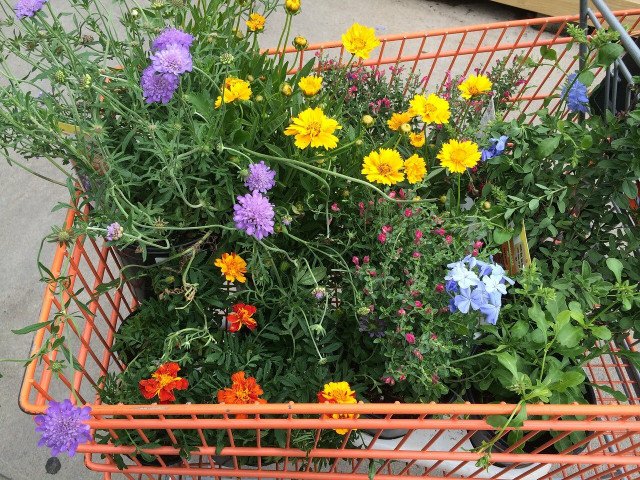
This will probably be less possible in larger garden centers. But if you support a small nursery near you by making a purchase, ask them if you can return the plastic pots to them. That way they can continue to use them. They may also be so excited about the idea that they’ll pass it along, tell other customers about it, or even put up a sign.
bare root woody plants
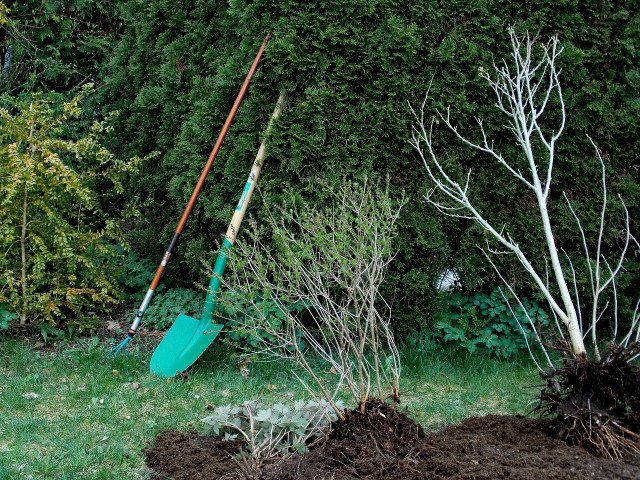
Bare root means that you can buy plants without pot and soil. They are only available between October and April, during the winter months when the tree is dormant. Look around to see if you can find a regional nursery that has these on sale.
Advantages:
- Usually bare-root shrubs and trees are less expensive because, among other things, they cost less to store. If you want to create a forest garden and need a lot of trees, this is a good option.
- You’ll also have less trouble shoveling the planting hole. This can be a lot smaller than when you plant a potted tree.
- Root stock is much easier to transport.
Disadvantages:
- The roots should not dry out. Therefore, bare root plants need to be in the ground quickly.
- They require more care and water during the growing phase than potted plants.
- It can easily happen that one or the other tree dies in bare-root woody plants. This can be because the plant has been stored too long or you made mistakes when planting it.
- Since planting trees and shrubs (especially bare-root) is a science in itself, check with a nursery or garden center beforehand.
recycling: improvise growing containers
To grow plants yourself, you do not necessarily need to buy new pots. You can use the following things, which are usually left over as trash in everyday life anyway:
- Egg cartons: Fill them to the brim with growing soil and press them down well. Put one seed per tray in the soil so you won’t have any problems taking out the little plants later.
- Toilet paper rolls: Cut them in half and place them close together, for example in a cardboard box. Fill everything tightly with soil, lay out your seeds and cover them with soil. Later, you can plant the rolls directly into the bed as they rot.
- Paper towels: Cut them into 4 regular pieces and proceed as you did with the toilet paper rolls.
- Yogurt cups: You can wash out small plastic cups and use them as propagation containers.
soil pot compactor / soil blocker
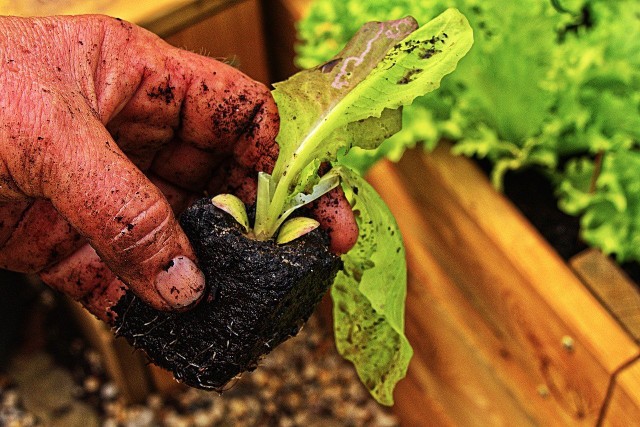
For advanced hobby gardeners or those who want to become one, we have a very special tip: so-called soil pot presses (you can find for example at **Amazon). Other names for them are soil or soil blockers. With the help of this tool you can form small solid earth cuboids.
A small hollow is created on the upper side, into which the seed is inserted. The plant can easily root through the solid soil. Place the small square pieces of soil next to each other in boxes or metal tubs. Later, when they are big enough, you can plant them in a larger pot or directly in the bed. Growing pots become unnecessary with this tool.
propagate existing plants

- Sowing and growing plants with purchased seeds is not the only way to get new plants for the garden or balcony. You can propagate them by cuttings, for example. On Utopia, you’ll find practical instructions for roses and ivy, among other things, that are guaranteed to work. Read more: Taking cuttings: 5 plants that you can easily grow and propagate.
- Some plants form root runners under the ground. This means that new small plants grow from a root network around the mother plant. These runners form, for example, lilac or vinegar tree. You can find a small specimen, dig it up and grow it up. Whereas some of the species with such propagation can quickly take over in the garden.
- Collect your own seeds in late summer and fall: this is the time of year when most plants form their seeds. Whether in the garden or out for a walk, walk around mindfully and see what you can find. You can collect them in small cardboard bags, label them, and put them out next spring.
swap with friends or neighbors
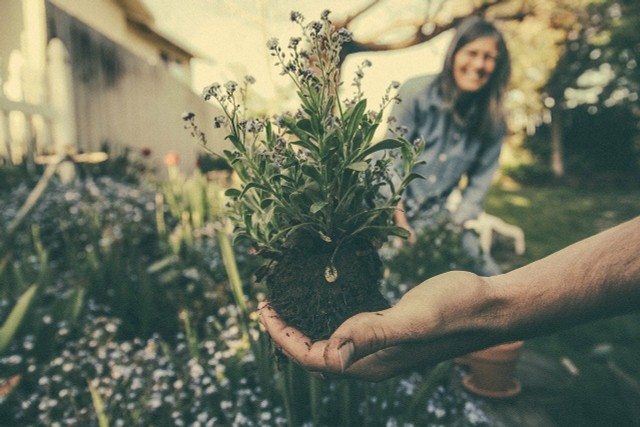
Do you like a plant in the garden of an acquaintance, neighbor, family or friend? Then dare to ask if you can take a cutting or a small plant with you. Dig them up and take them with you in a bucket.
Conversely, you can give them something they have their eye on. This way you can trade cuttings, runners, leftover seeds, or excess house, balcony, or garden plants with each other.
grow plants yourself instead of buying

This way you can avoid a whole mountain of new plastic pots: If you sow and grow your plants yourself, you won’t need to buy large plants in new pots every year. It’s best to use organic seeds. You can reuse your plastic pots for a long time if you do not store them in the blazing sun. This would cause them to become brittle and start to shed small pieces of plastic.
If you grow your own plants from a young age, you can cycle every year with the pots you already have. On Utopia you can find many instructions on how to grow your own vegetables, herbs or flowers. Here are a few examples:

